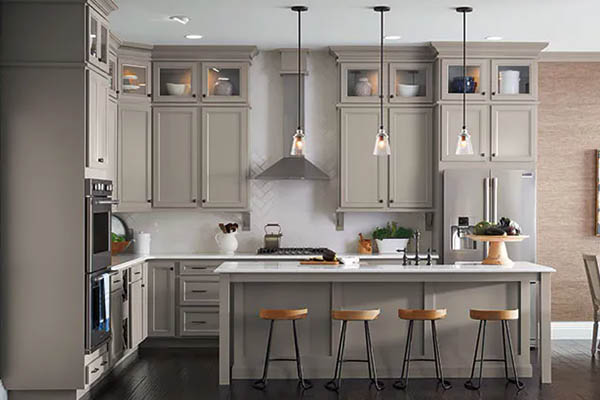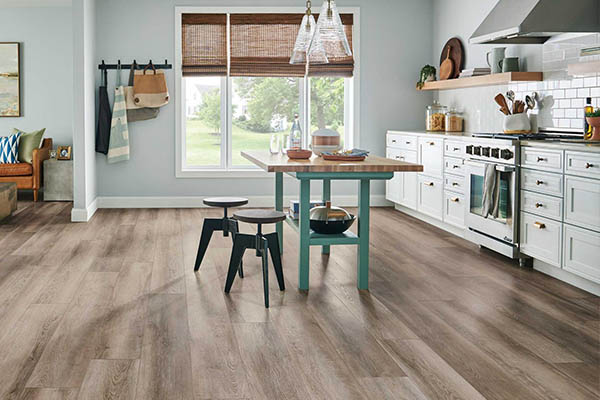Laminate Flooring: the most popular questions answered.

What is laminate flooring?
Laminate flooring is a type of flooring made from layers of fiberboard that are fused together with a photographic image of wood or other material on the surface. The core layer is typically made of high-density fiberboard, which provides stability and durability. The decorative layer, which is printed to mimic the appearance of materials such as wood or stone, covers the core. The decorative layer is safeguarded by a transparent wear layer, which offers resistance to scratches, fading, and stains. The final layer is a balancing layer on the back, which helps to stabilize the flooring and prevent warping. The layers are then bonded together under high pressure and heat to create a single, solid piece of laminate flooring. It is designed to mimic the look of hardwood or stone while being cheaper to acquire and install.

How durable is laminate flooring?
Laminate flooring is designed with durability in mind and is made to resist scratches, stains, and general wear and tear effects. Still, depending on durability class, laminate flooring can be scratched or damaged by heavy objects or pets, and it may not hold up well in high-traffic areas.
Laminate flooring is a good choice for a family home with moderate foot traffic; it can last up to 20 years or more with proper care and maintenance.
What are the different levels of durability?
Laminates are typically categorized into different durability classes based on their resistance to wear, abrasion, and staining, with AC5 being the most durable and AC1 being the least durable.
The most common durability classes are:
AC1: Lowest level of durability, used for residential purposes and light commercial use.AC2: Moderate durability, used for residential purposes with moderate traffic.
AC3: High durability, suitable for commercial and residential use with heavy traffic.
AC4: Very high durability, used for commercial purposes with heavy traffic.
AC5: Extreme durability, used for heavy commercial use.
It is important to note that laminate flooring manufacturers may use different durability class definitions and grading systems, so it's always best to check the specifications of a particular product.
What are the pros and cons of laminate flooring?
Pros of laminate flooring:
Price: Laminate flooring is generally less expensive than hardwood flooring, making it an excellent option for those on a budget.Durability: Laminate flooring is resistant to scratches, dents, and wear.
Installation: Since laminate flooring is a floating floor, no adhesives or fasteners are required for installation over most existing flooring.
Maintenance: Laminate flooring is easy to clean and maintain and doesn't require special cleaning products or treatments.
Versatility: Laminate flooring comes in a wide variety of styles, colors, and patterns, so it can easily mimic the look of hardwood, tile, and other natural materials.
Cons of laminate flooring:
Coldness: Laminate flooring can feel cool to the touch, which may not be ideal in colder climates.Sustainability: Laminate flooring is made of synthetic materials, which may not be as environmentally friendly as hardwood or other natural materials.
Repairability: Unlike hardwood flooring, laminate flooring can't be sanded or refinished to remove scratches or damage, which means it will need to be replaced when it becomes too damaged.
Limited lifespan: Laminate flooring has a lifespan of around 15-20 years, which may not be as long-lasting as hardwood flooring.
Moisture resistance: Laminate flooring can deform or swell when exposed to moisture, making it unsuitable for places with much moisture, like bathrooms or laundry rooms.
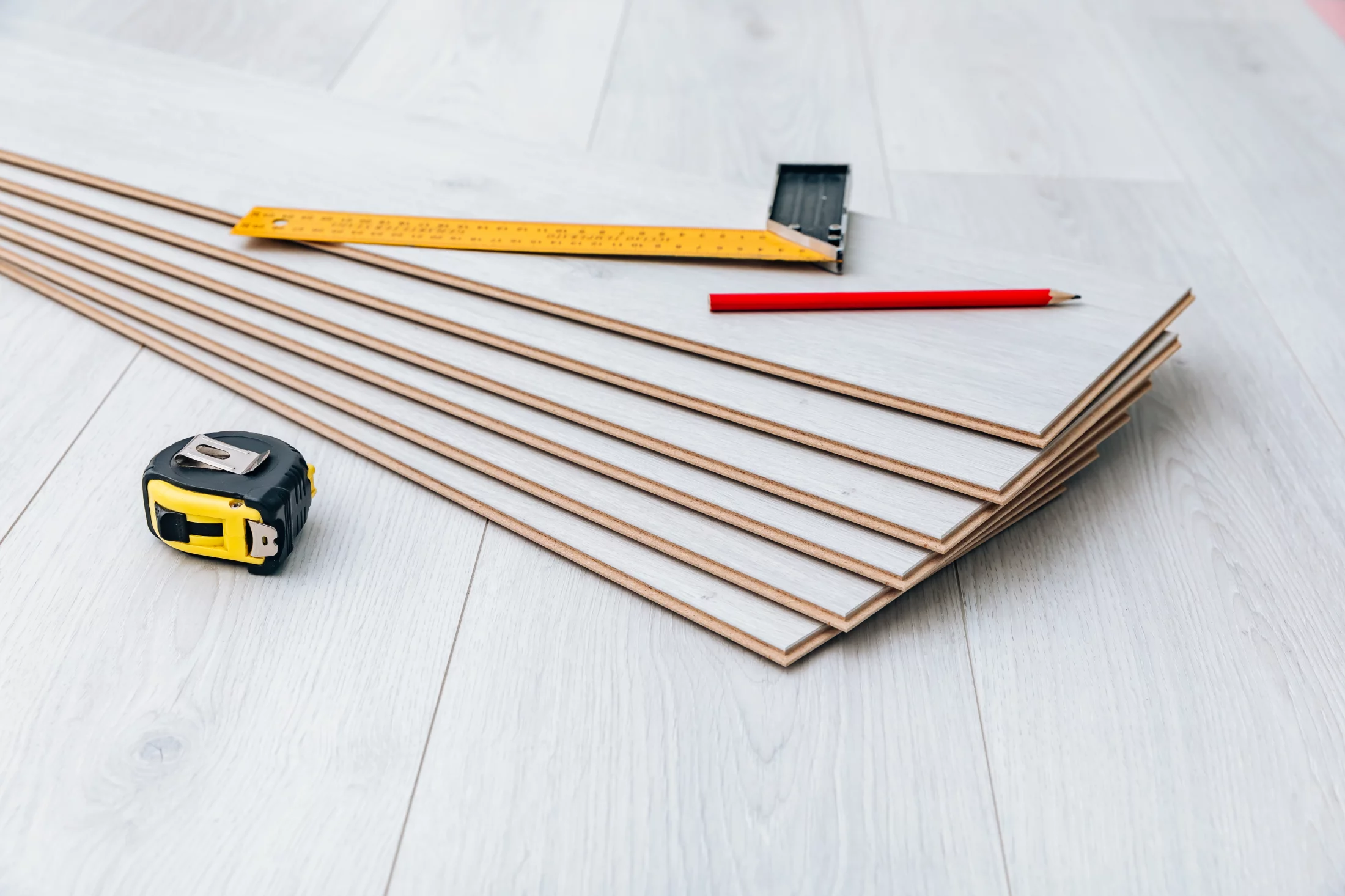
What is the best way to clean and maintain laminate flooring?
Cleaning and maintaining laminate flooring is relatively simple. Here are a few suggestions to keep your laminate flooring in good condition:
Maintain the cleanliness of your laminate flooring by frequently sweeping or vacuuming to remove dirt and debris and avoid causing surface scratches or damage.Use a damp mop or cloth to clean the floor. Don't use a lot of water to prevent the laminate from swelling or warping. Use a gentle cleaning agent made especially for laminate flooring and a moist towel or mop as an alternative.
Avoid using harsh cleaning chemicals or abrasive materials on your laminate flooring. Using abrasive materials or harsh chemicals on laminate flooring can damage the surface and make it more susceptible to wear and tear and scratches.
Promptly clean up any spills or stains to prevent them from setting into the laminate and causing permanent damage.
Use felt pads or furniture protectors on the bottom of chairs, tables, and other furniture to prevent scratches on the floor.
Keep high-heeled shoes and pet claws trimmed to minimize scratches on the floor.
Use mats at entryways to help trap dirt and debris and prevent it from being tracked onto the floor. By adhering to these suggestions, you can preserve the appearance of your laminate flooring and prolong its lifespan.
Is laminate flooring suitable for use in areas with moisture?
Bathrooms and basements are examples of spaces where laminate flooring is not advised due to the high amounts of moisture.
If laminate flooring is exposed to water or moisture, it can absorb it and swell, warp, or delaminate. The presence of excess moisture can lead to the growth of mold and mildew, which can not only harm the laminate flooring but also pose a threat to your health.
While some laminate flooring products are more water-resistant than others, none are entirely waterproof. Therefore, it is best to avoid installing laminate flooring in areas with water or moisture.
If you are looking for a flooring option that can handle moisture, you may want to consider tile, vinyl, and LVT, which are more resistant to water damage.
How to refinish or sand laminate flooring?
It is not possible to refinish or sand laminate flooring. Laminate flooring is made of layers of fiberboard with a photographic image of wood or other material on the surface.
The image cannot be sanded or refinished, so if the surface is damaged, the only option is to replace the damaged plank or tile.
If you have a scratch or damage on your laminate flooring, you can try to repair it using a touch-up kit or filler. However, if the damage is significant, replacing the harmed plank or tile can be the wisest course of action.
How to fix scratches or damage on laminate flooring?
Repairing scratches or damage on laminate flooring can be done in a few different ways, depending on the severity of the damage:
Minor Scratches: For light surface scratches, you can use a colored wax pencil or crayon that matches the color of the flooring. Simply color in the scratch and buff it out with a soft cloth.Deep Scratches: For deeper scratches, you can use a touch-up kit. These kits come with a filler that is applied to the scratch and then sanded down to match the level of the surrounding floor.
Damaged Planks: A significantly damaged board may require replacement. Locate a spare plank or a matching one from a hidden area, such as a closet or under the appliance.
Use a laminate repair paste: Laminate repair paste is a special type of putty that can be used to fill in scratches and chips. It is applied to the damaged area and then sanded down to match the surrounding floor.It is important to note that these repairs may not be perfect, and the repair area may still be visible. Additionally, the repair may not match the surrounding floor perfectly.
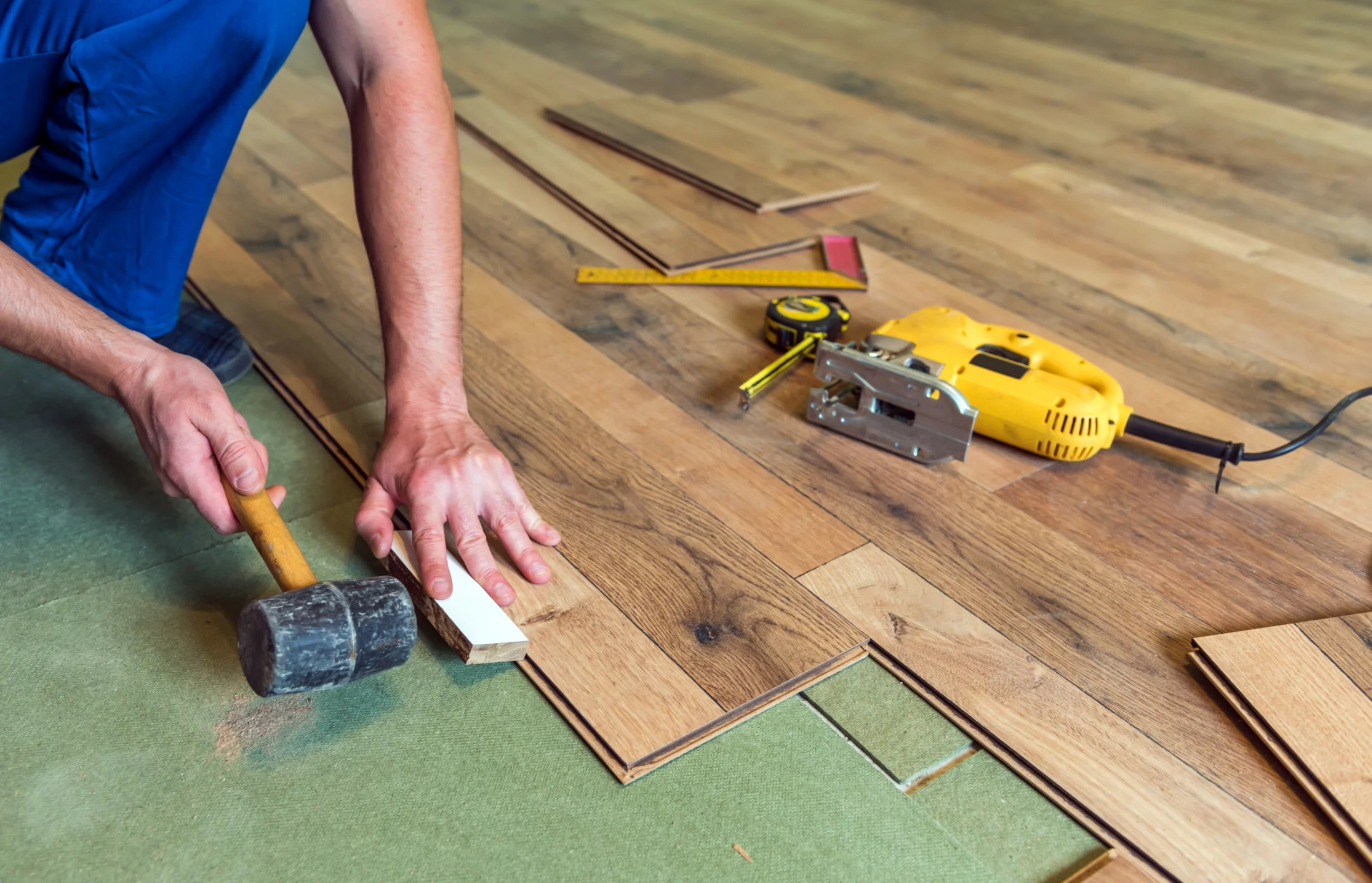
Can laminate flooring be installed over existing flooring?
Yes, laminate flooring can be installed over existing flooring as long as the existing flooring is in good condition and is a suitable surface for laminate flooring installation.
Before installing laminate flooring over existing flooring, it is important to ensure that the existing flooring is level, clean, and free of any debris.
It's also important to ensure that the existing flooring is dry and free of any moisture, as moisture can cause the laminate flooring to warp or delaminate. It's essential to check the subfloor condition. If the subfloor is in poor condition, the laminate flooring may not lay flat, it can make noise, or it can feel spongy underfoot.
The most common types of existing flooring that can be covered with laminate flooring include:
ConcreteCeramic tile
Vinyl flooring
Hardwood flooring
Linoleum
It's important to note that carpet and other soft flooring materials should be removed before installing laminate. These materials will create an uneven surface that can cause the laminate flooring to shift, squeak, or feel spongy underfoot.
Additionally, it's important to check the manufacturer's instructions before installing laminate flooring over existing flooring, as different brands and types of laminate flooring may have different requirements or recommendations.
Are there any special installation requirements for laminate flooring?
Yes, there are some special installation requirements for laminate flooring to ensure that the flooring is installed properly and will function as intended.
Here are a few key considerations to keep in mind when installing laminate flooring to ensure a successful and long-lasting installation:
Subfloor: The subfloor should be level, clean, and dry. Any uneven areas should be leveled out before installing the laminate flooring.Moisture barrier: It is crucial to install a moisture barrier over the subfloor prior to installing the laminate flooring to protect it from any potential moisture damage.
Expansion gap: An expansion gap of around 1/8 inch to 1/4 inch should be left around the perimeter of the room to allow for expansion and contraction of the laminate flooring due to changes in temperature and humidity.
Underlayment: An underlayment should be installed between the moisture barrier and the laminate flooring to provide a smooth surface for the laminate planks to be installed on and to provide sound insulation and moisture protection.
Acclimation: Before installing laminate flooring, it is crucial to let the planks acclimate to the room's temperature and humidity levels. This means they should be left out in the room for at least 24-48 hours before installation to allow them to adjust to the room's conditions.
It's important to read the manufacturer's instructions before installing laminate flooring, as different brands and types of laminate flooring may have different requirements or recommendations. It's also important to hire a professional to install the flooring if you're not confident in your abilities.
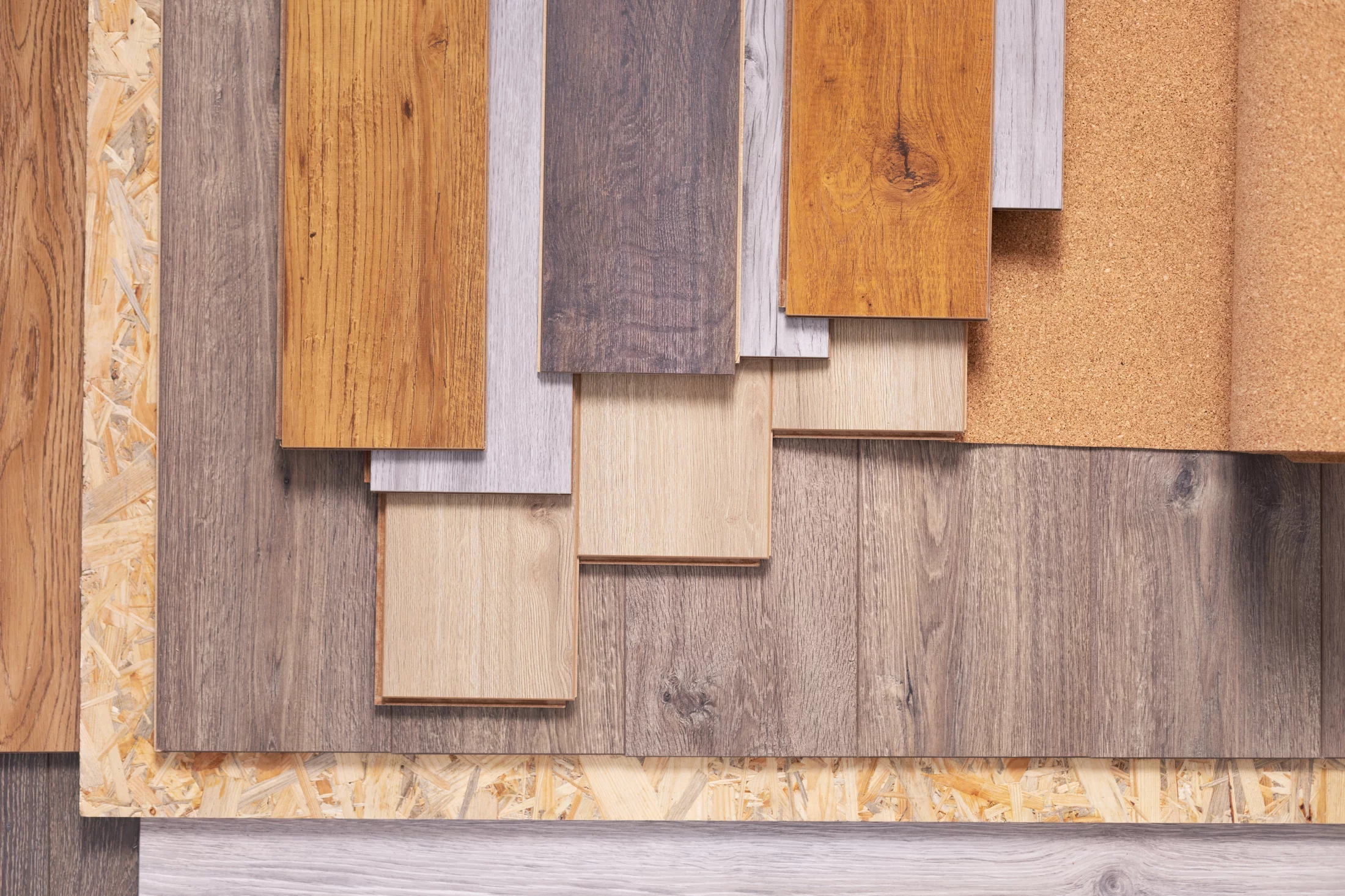
Is laminate Eco-friendly?
There are some environmental concerns associated with laminate flooring, specifically regarding the materials used to make it and the production process.
Materials: Laminate flooring is typically made of several layers of materials, including a high-density fiberboard (HDF) core, a decorative paper layer, and a melamine resin top layer. These materials are often made from wood, which can contribute to deforestation if the wood is not sustainably sourced. Additionally, some laminate flooring products use formaldehyde in their production process, which can be harmful to indoor air quality.Production process: The production of laminate flooring involves the use of chemicals and energy, which can have an environmental impact. Additionally, laminate flooring is not biodegradable, and it can contribute to landfills when it's disposed of.
Recycling: Recycling laminate flooring can be challenging, and it is not biodegradable. It is frequently thrown out and may wind up in landfills, where it will take a long time to disintegrate.
VOCs: Laminate flooring can emit volatile organic compounds (VOCs), which can have negative effects on air quality.
It's important to note that many manufacturers are now producing laminate flooring with lower formaldehyde emissions and sustainable sourcing of raw materials.
Additionally, laminate flooring with low VOC emissions is available in the market. Choosing flooring that is certified by organizations such as Forest Stewardship Council (FSC) or FloorScore® can help ensure that the flooring has been produced in an environmentally responsible manner.
How long is the warranty on laminate flooring?
The warranty on laminate flooring can vary depending on the manufacturer and the specific product. Some manufacturers offer a lifetime warranty on their laminate flooring, while others may only offer a 5-10 year warranty.
It is crucial to thoroughly read the warranty information and comprehend the terms and conditions of coverage and exclusion. Warranties typically cover defects in manufacturing laminate flooring, such as warping, splitting, cracking, and discoloration. Most warranties do not cover damage caused by normal wear and tear, improper installation, or failure to maintain the flooring properly.
It's also important to note that the warranty can be void if the laminate flooring is installed in an area where there is a lot of moisture, such as a bathroom or basement, if the installation instructions are not followed, or if the flooring is exposed to excessive heat or direct sunlight.
It's always a good idea to keep the warranty information, purchase receipt, and installation instructions in a safe place and refer to them when needed.
What are the differences between laminate and hardwood flooring?
What are the best brands of Laminate?
Technology is evolving, and each brand comes up with new products and features every year, so it is hard to say which brand is the best. It is best to look at the particular product, its qualities, and its features and read product reviews. Nevertheless, below, you can find reliable brands that have been on the market for a long time and are considered among the best by flooring professionals.
Shaw: Shaw Floors, established in 1967, offers carpet, hardwood, laminate, luxury vinyl, tile, and stone flooring and solutions for real-life and real homes
Armstrong: AHF Products manufactures beautiful, durable hard surface flooring for the consumer and commercial markets in a range of textures, styles, and designs to fit the needs of the American homeowner and business owner.
Mohawk: Ever since they rolled out the first carpets in 1878, Mohawk has built quality into every flooring product. Today, Mohawk continues that tradition with revolutionary product innovation, award-winning design, and a talented team dedicated to outstanding service.
Tarkett: Tarkett produces a wide range of sustainable and coordinated floors in different materials and types, such as modular carpets, broadloom, woven, vinyl, linoleum, rubber, and laminate.
Mannington: Mannington Mills, Inc., is a fifth-generation, family-owned company based in Salem, NJ, with locations worldwide. We manufacture residential and commercial flooring under the Mannington, Mannington Commerical, Amtico, Phenix, and Burke brands.
Conclusion
Ultimately, the choice between laminate and hardwood flooring will come down to personal preferences and financial constraints. Factors such as desired appearance, durability, maintenance, and cost will all play a role in determining the best option for you.


